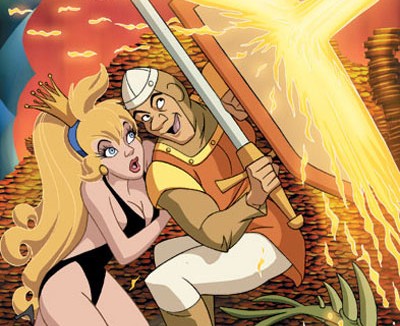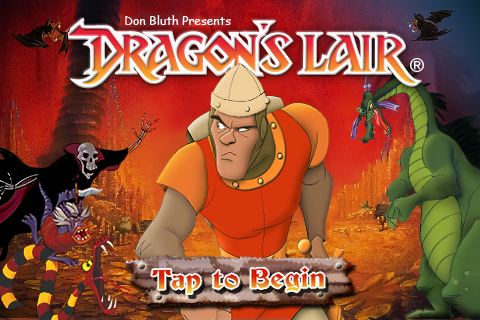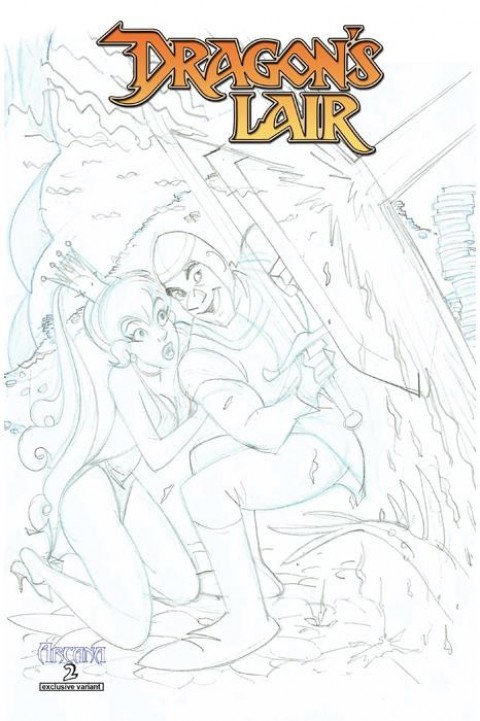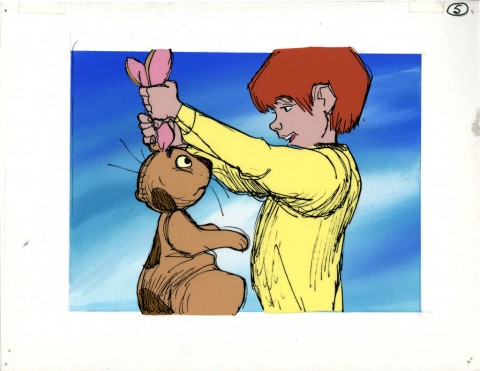

EXCLUSIVE: Don Bluth Inteview About His Return To “Dragon’s Lair”

Animation legend Don Bluth hardly needs an introduction on Cartoon Brew. Long story short, he started working at Disney in the late 1950s, and rose through the ranks to become a key animator at the studio. In the 1970s, he famously rebelled from the then-current vision of animation by Disney’s bosses and launched his own company, Don Bluth Studios, with fellow animators Gary Goldman and John Pomeroy.
His independent spirit led him to create animated features like The Secret of NIMH, An American Tail and The Land Before Time, but for some gaming fans, it’s his work on innovative arcade games like Dragon’s Lair and Space Ace for which he is most fondly remembered. Fast forward to today, and that’s the reason we’re talking to Bluth as Zuuka Comics is releasing a digital version of a Dragon’s Lair comic Bluth co-authored as an app for Apple devices.
Bluth is a seminal figure in animation, in many ways a canary in the coalmine for the downturn at Disney in the late 70s as well as positive turns like the use of animation in video games, now a billion dollar industry of its own. Bluth’s last feature film was 20th Century Fox’s Titan A.E., and since then he’s been keeping busy doing work on video games like 2003’s I-Ninja and his own game company, Square One Studios. In 2004 directed the music video “Mary” for the band the Scissor Sisters, and him and his partner Gary Goldman have been working on various Dragon’s Lair projects including a potential feature film and this new digital comics app.

Chris Arrant: We’re talking to you today because Zuuka Comics is putting out a digital comic app of the comics based on your Dragon’s Lair work. First of all, what’s it like for Dragon’s Lair to be one of your best known works?
Don Bluth: Well, it has been very strange. Even as far back as our move to Ireland (1985) the young art students knew us more for Dragon’s Lair than for The Secret of NIMH. But then, Dragon’s Lair made a huge splash around the world. To us, the game was not as dear as working on feature films. We just had fun with it. It was truly a surprise when we heard back from the distributor that the three short sequences we had finished for the Chicago Gaming Convention in March of 1983 was the hit of the convention.
Chris: For this app you drew the cover to chapter one as well as a bonus story — comics seem a rarity for you. What do you think of the comics form with your own art in mind?
Don: I actually read a lot of comics when I was a kid on a farm. And, I used the comics to copy and practice drawing the characters. Mostly Disney comics at that time. I think the artists that drew our characters and laid out the pages did a great job, as did the inkers and colorists. I enjoyed doing the pencil for the cover art. It had been 20 years since the release of the original game (1983 – 2003), so I had to drag out of the old model sheets to draw the Dirk and Princess Daphne characters.

Chris: Although Cartoon Brew readers know you best for your animated movies, you’ve time and time again found a home in video games with Dragon’s Lair to the recent Tapper game and your work at Square One Studios. It seems video games, and animating for them, are your primary outlet right now — can you tell us about your current work?
Don: Gary and I have been consulting with a video game company in the UK. I’ve also been directing plays here in Phoenix. I dabbled in musical theater with my brother Toby when we were in our 20’s back in the mid-sixties. It’s fun and keeps up my blocking skills. Gary has been working at developing IPs for possible feature films, and pushing to get Dragon’s Lair: The Movie in full production as a feature film.
Chris: The animation business has changed a lot since you first started, but in many ways some companies are going through the same cycles. What do you think of the industry right now?
Don: It’s interesting. Though I do miss the art of a traditional, hand-drawn animated film. Looks like the only risk takers are in Europe and Japan as far as 2D is concerned. There is something still troublesome with bringing CG characters to life. They still feel like puppets to my eye. Though, I think that The Incredibles, Ratatouille and especially Tangled were well executed, as far as bringing their CG characters to life.
Chris: What are the bright spots for you — what interests you the most of everything coming out now?
Don: Regardless of the animation, it’s really all about story. It’s a bit of a mixed bag between the competitors, and in the end, if the story doesn’t captivate and entertain, I’m not much interested. For me, bright spots among the CG films, were Monsters Inc, Finding Nemo, the first 45 minutes of Wall-E and the three films I mentioned above.
Chris: Could you see yourself returning to film animation?
Don: Of course! Animation is still my passion. Though, boarding and blocking the story is the challenge I enjoy the most.
Chris: Have you ever thought about doing a personal animated short of your own?
Don: I had some ideas in the past about The Velveteen Rabbit [pictured below], Star Baby and other short stories that I believe would make great short films, say in the 25 minute range. But not as “personal animated shorts”. I see them done in classical hand-drawn animation. Maybe as a package of shorts, a “package picture”, like Saludos Amigos, Melody Time, Make Mine Music or Ichabod and Mr. Toad. Those were very entertaining and successful family entertainment. So our titles got scripted and developed with character designs and some storyboarding, however, never went into production. Whoops!…I should never say never.

Chris: I wanted to talk about your history a bit. You graduated from Brigham Young with a degree in English lit, and later studied under the greats at Disney, including John Lounsbery. Which of your early experiences do you think most informed your work here in the long-run, and why?
Don: Interesting question: I fell absolutely in love with Disney animation after seeing my first movie in the local theater, Snow White and the Seven Dwarfs. From the time I got back home from that experience (and I think I was about 4 or 5 years old) I started trying the imitate their drawing style. I asked my mother to buy Disney comics and I would trace the characters so often I eventually could draw them without looking at them. This went on forever through my youth and adulthood. I drew all the time. By the time I got out of high school, I knew I could draw. I wanted to work for Walt Disney.
As soon as I graduated high school, I applied for a job there in the animation department. I was fortunate enough to get to work for John Lounsbery as his inbetweener and within six months, as his animation assistant. I left the first time to go to BYU, I worked summers part-time at Disney. Then, after a year I was called by the church to go on a mission. When I returned I continued at BYU and worked summers again. I started a choral, which ended up with about 60 singers, called The New Generation. We performed all over the western states and even into Mexico, Then, I went into live theater for three years with my brother.
I eventually went back to animation. First at Filmation Studios for three years then back to Disney in 1971, during the production of Robin Hood. I think it was during this period where studying the classics of English Literature really clicked in and I was suddenly aware that the stories Disney Animation was producing just didn’t have the power of what they had done while Walt was alive. Being there again, this time actually as an animator, with the likes of John Lounsbery, Milt Kahl, Frank Thomas, Ollie Johnston, Eric Larson and Woolie Reitherman was thrilling, but as Frank once told me coming back from the cafeteria, looking up at the Animation Building, “You know, once upon a time there were over 1200 of us artists in that building, with less than one hundred attorneys and accountants. Now we’re over-run with attorneys and accountants, with just over 100 artists.” It had become an empty shell, with the exception of these master animators. Animating stories that couldn’t hold a candle to the films they had contributed to thirty years before.
I think that both working at Disney, under these artists and my education fixed my mind on trying to make it better. Lofty thoughts, but I realized that someone needed to try.

